The Kinkajou in Costa Rica
The Kinkajou in Costa Rica, also known as “La Martilla,” is an arboreal animal commonly found in dry forests. It generally prefers areas where it can find trees, even if there are houses or hotels nearby. However, not many people are aware of this beautiful creature, and due to its nocturnal habits, it is seen as an enigmatic being that lives in the shadows.
The hammer and its natural history
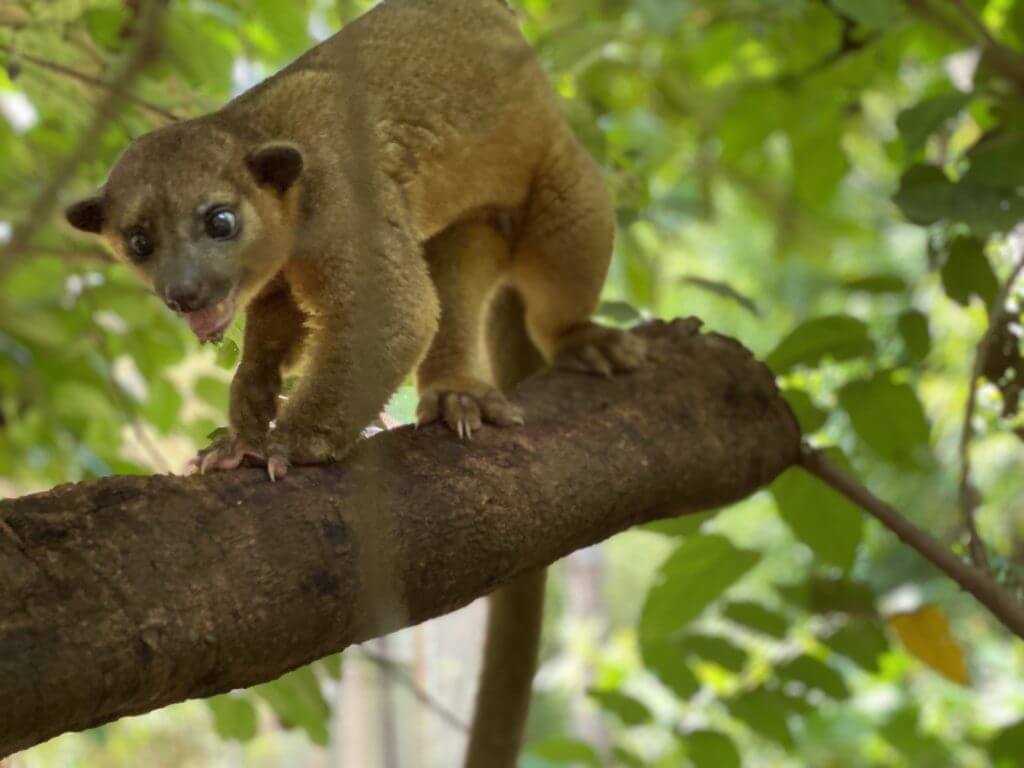
Scientific name: Potos flavus.
Distribution: From southern Mexico to Mato Grosso in Brazil. In
Costa Rica, it is found in various locations such as San Carlos, Osa, the
Province of Guanacaste, Monteverde, and Volcán Barva, living in
rainforests and dry forests.
The habitat of the Kinkajou in Costa Rica.
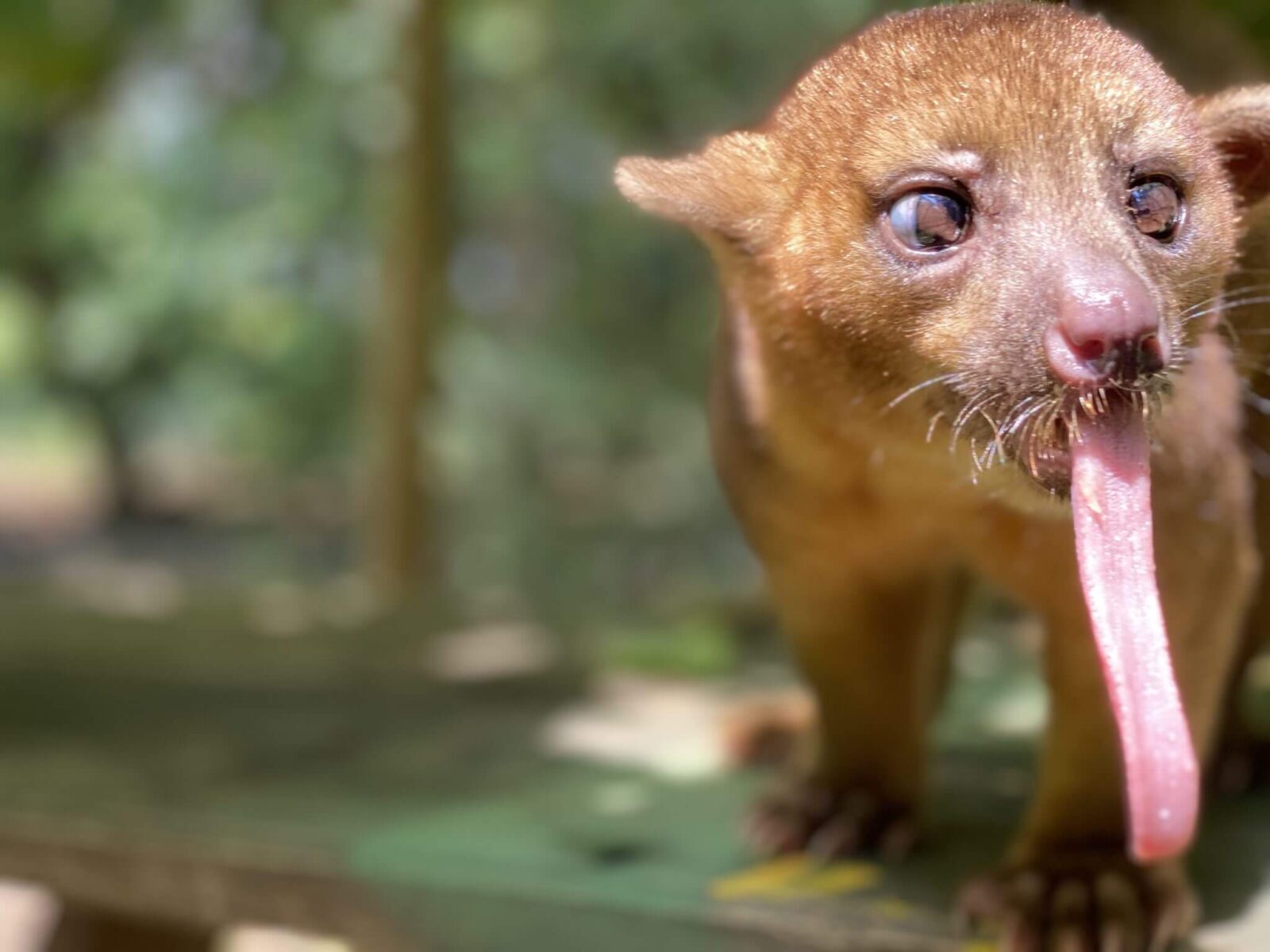
🌿 Who am I?
I am a nocturnal and arboreal animal, related to raccoons. Although I may look like a monkey, I am not one. I spend most of my time in trees and have a prehensile tail that helps me move between branches. My diet mainly consists of fruits, nectar, and sometimes small insects. I play a very important role in the forest: I am a natural pollinator, especially of flowers like those of the balsa tree.
As a typical animal in the country’s rural areas, people call me by different names such as “Lion Monkey,” “Night Dog,” or “Night Monkey.” Currently, there are not many threats to this animal, mainly because “The Martilla” usually comes out at night, avoiding encounters with people who could harm it. Moreover, there is no evidence that people hunt this tree-dwelling mammal for food.
However, it can lose its habitat due to urbanization, agriculture, and wildfires, with the last reason significantly reducing the kinkajou’s chances of survival in Costa Rica.
👉 In addition to being an excellent climber, the kinkajou is also a great seed disperser. By feeding on fruits and traveling across large areas of the forest, it contributes to the natural regeneration of ecosystems. Its role as a pollinator and disperser makes it a silent ally for the health of tropical forests.
Learn more about the Kinkajou in Costa Rica by clicking the button below.
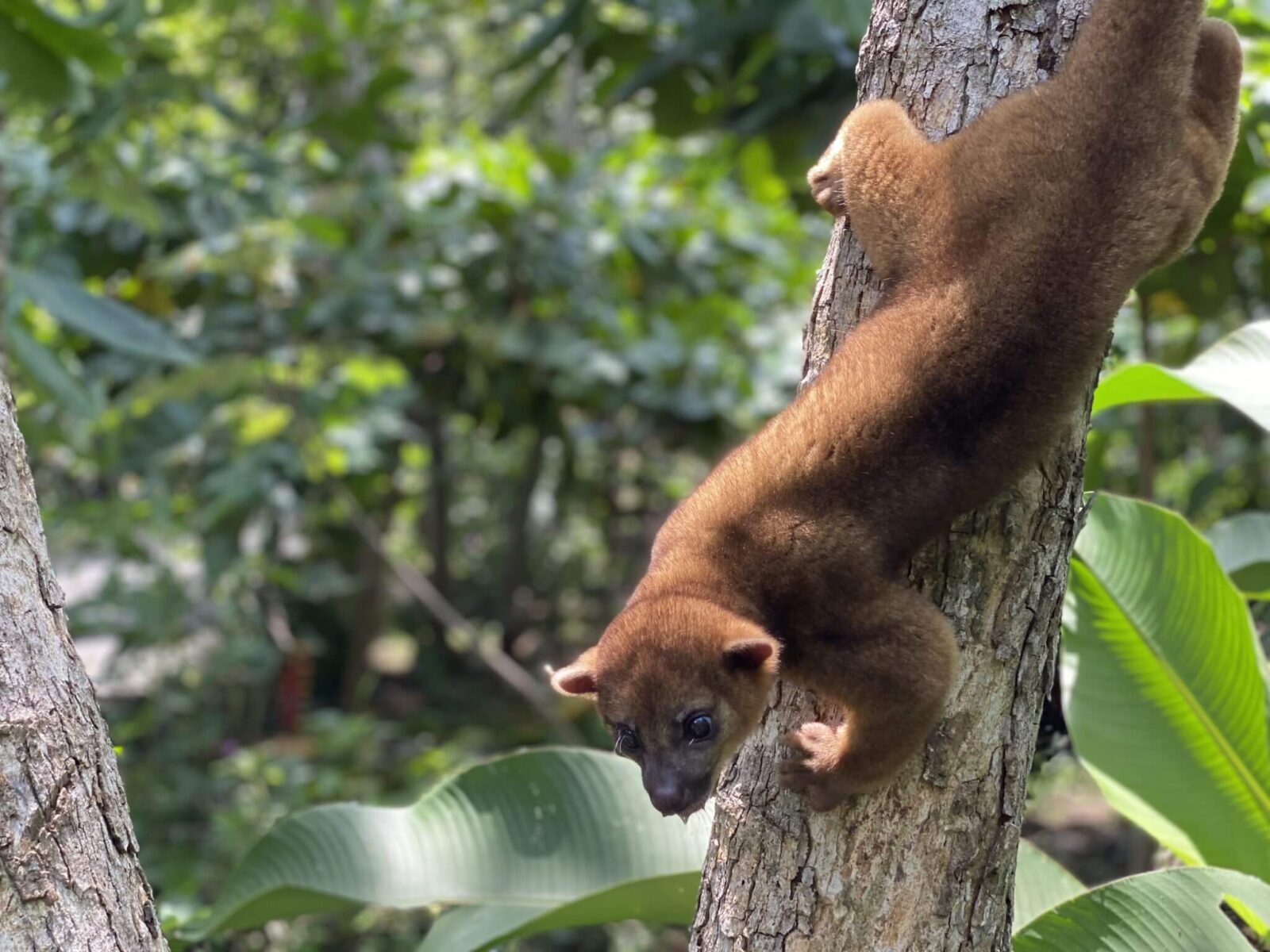
Additionally, there are some people in the towns who extract wildlife from nature to use it as a tourist attraction, and visitors have to pay if they want to take a photo, touch the animal, or feed it without going into the forest or the mountain, and that situation can also include “La Martilla.”
However, there are different places in Costa Rica, such as zoos and rescue centers, where people work on rehabilitating wildlife and can help this tree-dwelling mammal and many more animal species in Costa Rica.
Natural History of the "Mico león"
Order
The Order Carnivora is a group that includes animals adapted for pursuing and catching their prey. In the case of the Family Procyonidae, its members are not large in size, and their plantigrade paws do not have retractable claws. They have arboreal habits and a strong social behavior, which is why they often form large groups or families.
As their typical social behavior indicates, the “Lion Monkey” forms groups with many members that enjoy staying in trees during the day and coming out at night. It has a round head with small ears and very large eyes, and it also has a cream-colored belly. Additionally, its fur can be brown or reddish depending on whether it lives in a humid forest, or golden-brown if it lives in a dry forest.
Although the “Night Monkey” is included in the Order Carnivora, the truth is that it does not usually eat meat and prefers fruits; in fact, its diet is composed of 99% fruits, but it may sometimes eat birds, small mammals, eggs, and insects when necessary.
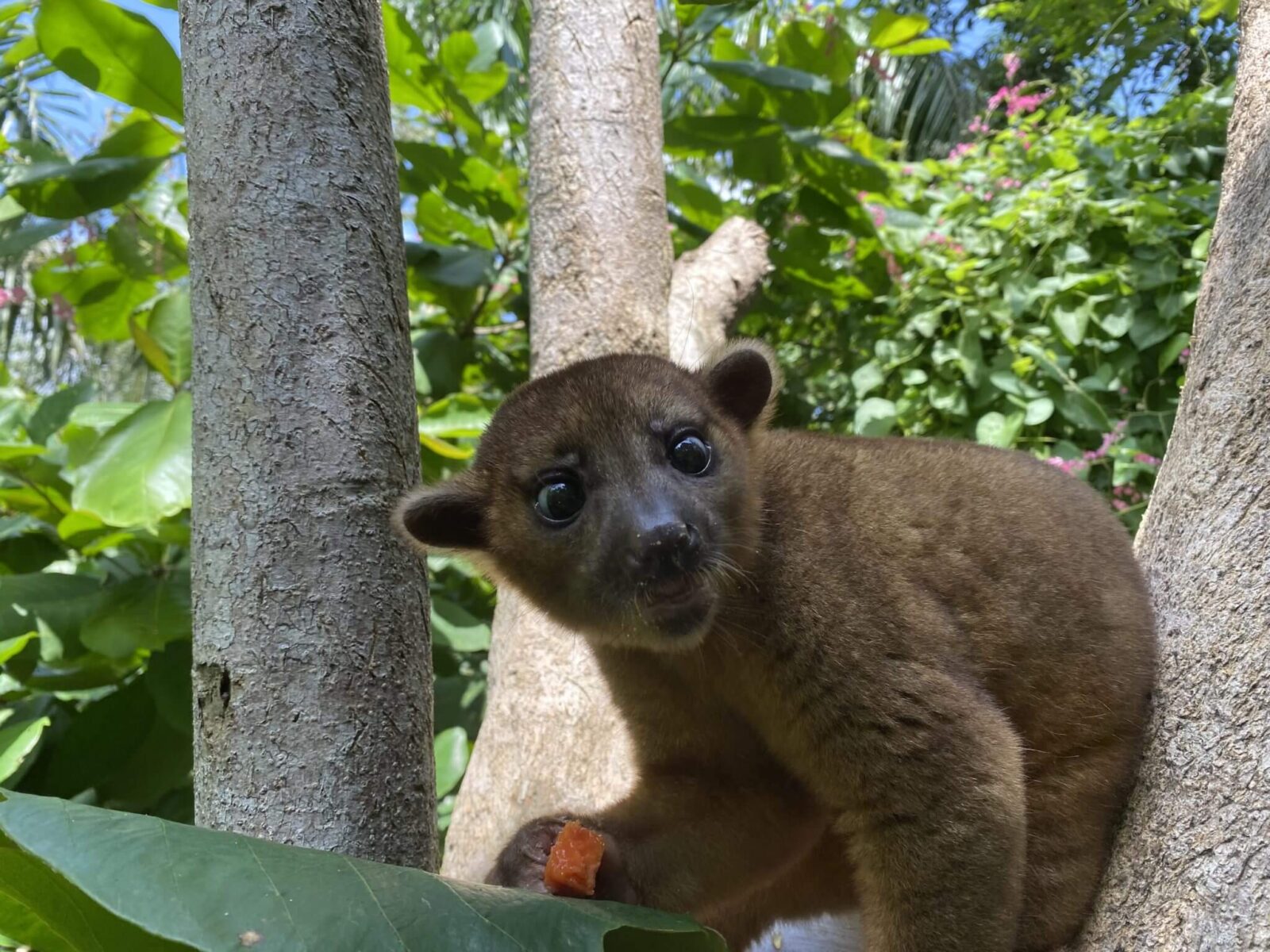
What are the young Kinkajous like?
Regarding reproductive behaviors, females remain pregnant for a period of about 112 to 118 days and then give birth to one or two offspring, which they carry on their backs until they become independent.
Seven interesting facts about this beautiful tree-dwelling mammal
Seven interesting facts about “The Night Monkey”.
1) Potos flavus has a prehensile tail that it uses to move more easily through the trees.
2) Sometimes “The Night Monkey” is confused with the Olingo (Bassaricyon gabbii) because its body has the same characteristics, but the latter does not have a prehensile tail.
3) The “Night Monkey” has scent glands on its face, throat, and belly.
4) This animal is very important in the ecosystems where it lives because it disperses the seeds of different tree species and helps in the pollination process.
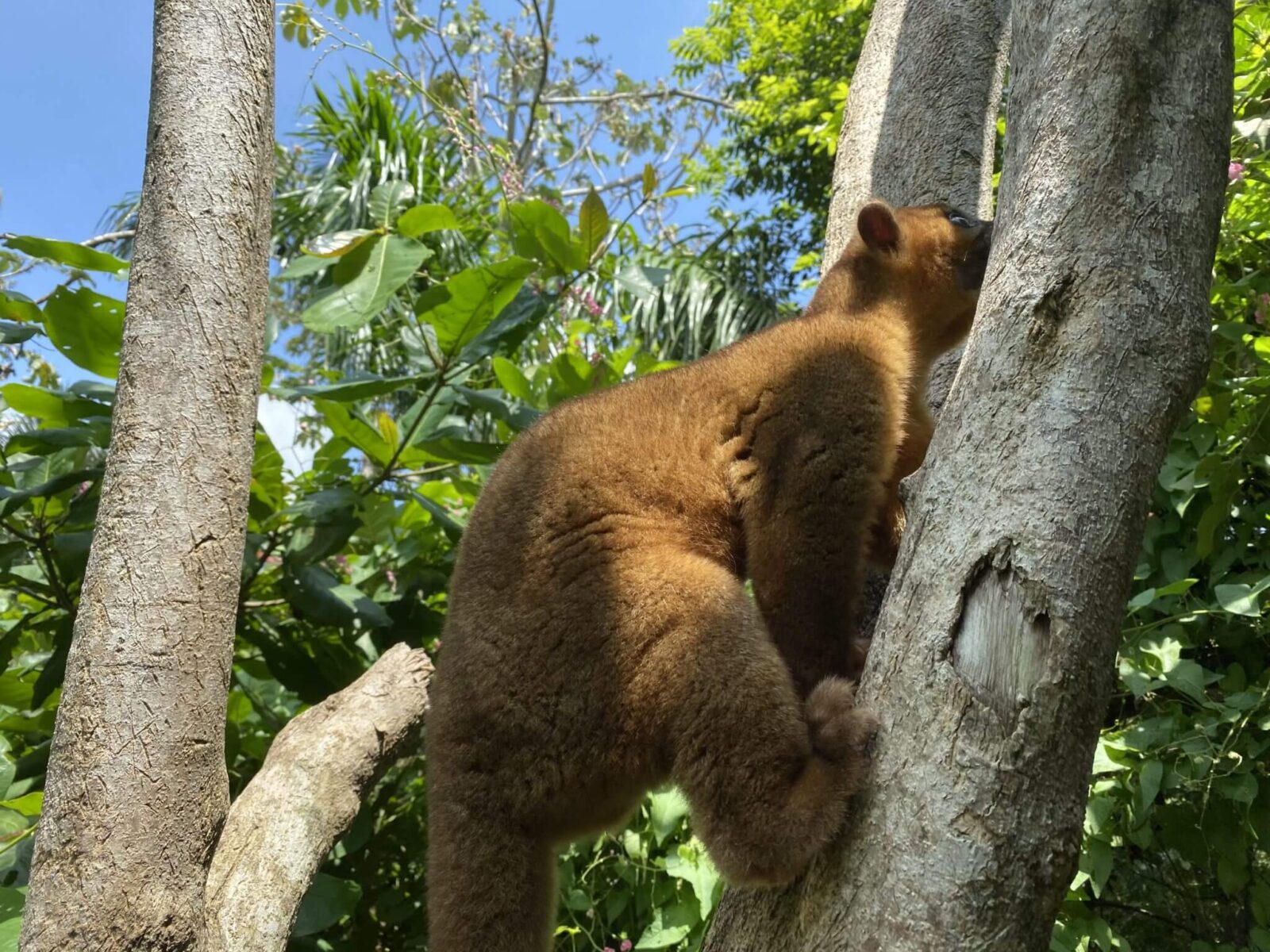
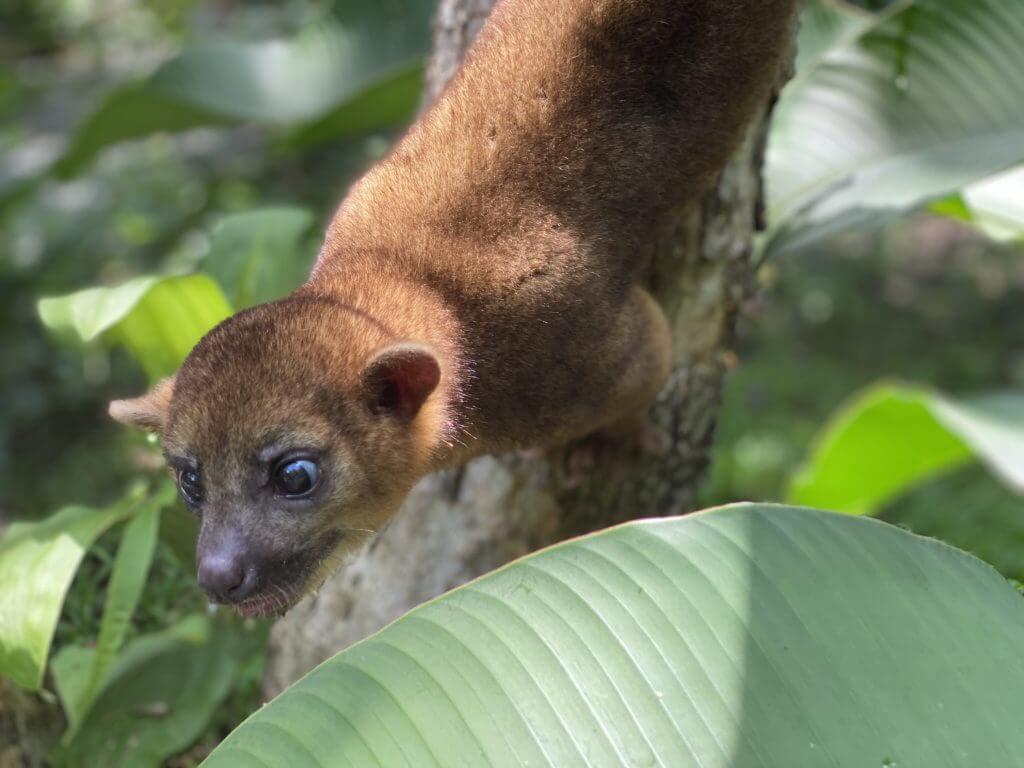
5) The “Howler Monkey” makes a very distinctive sound, like a scream or a howl, which is commonly heard in the rural areas of Costa Rica during the night.
6) The Kinkajou in Costa Rica can live up to 20 years with proper care in captivity. Its use as a pet is prohibited by the wildlife law of Costa Rica 7317, articles 14 and 18.
7) This tree-dwelling mammal mainly feeds on fruits and nectar from flowers, which is why it has a long tongue of up to 5cm to extract nectar. Due to its long tongue and whiskers, it can transport pollen from flower to flower, thus facilitating the fertilization of tropical plant species in Costa Rica.
See other wonderful animals at the NATUWA Sanctuary by following the link. See more animals…!
Captive management, diet, and environmental enrichment.
Enclosures for Kinkajou
In captivity, this animal needs a space with branches and logs where it can climb and move using its prehensile tail, even while eating or simply relaxing, as an effort to reduce any cause of stress. A walled garden with trees and water sources would be the ideal habitat for this arboreal animal; providing the opportunity to forage in the trees for food such as fruits and flowers. Of course, being in captivity requires supplemental nutrition to what it can find for itself in the wooded enclosure.
Since it is a nocturnal animal, the “Night Monkey” usually sleeps during the day, and for this reason, it needs a place where it can hide and rest peacefully until night. A den high up in the enclosure (wooden box, hollow log) is ideal since they are nocturnal mammals. It is important to incorporate platforms made of wood or branches into the enclosure so it can traverse the area without any issues.
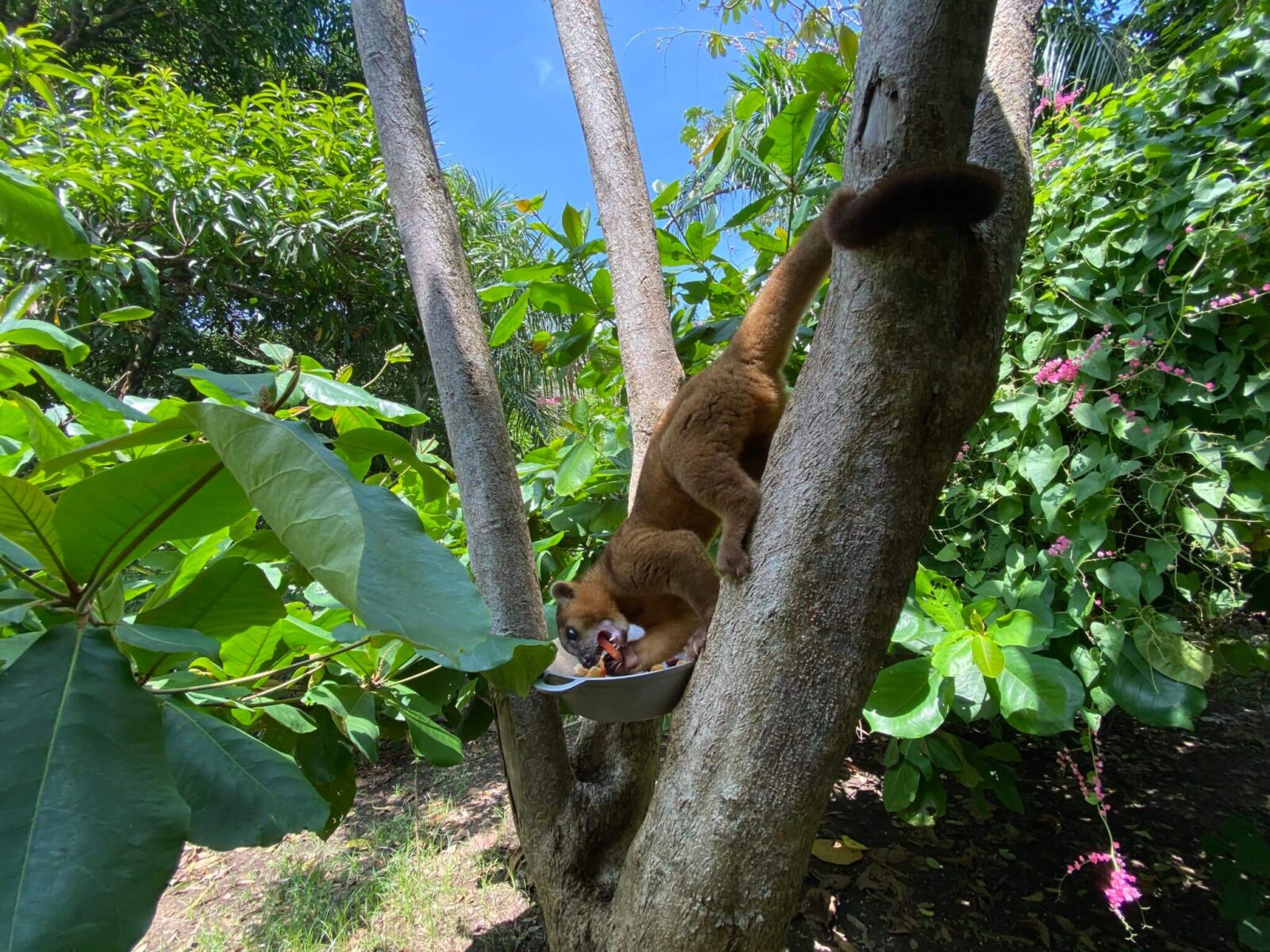
The Kinkajou in Costa Rica and its Diet in Captivity
Additionally, to remain healthy and maintain a good physical appearance in captivity, it has a diet consisting of fruits (bananas, apples, mangos, among others), honey, occasional meat, and vitamin and mineral supplements. Furthermore, it only feeds when awake, as the goal is to avoid changing its natural feeding behaviors. Generally, it feeds at night.
🚫 Why Am I in Natuwa?
I was confiscated by the authorities of Carara National Park from some foreign individuals who kept me as a pet. I arrived at Natuwa over 10 years ago, already an adult. Due to spending so much time in captivity and losing many of my natural skills, I cannot return to the wild.
💚 A Second Chance
At Natuwa, I have a safe space where I can live in peace and receive the care I need. Here I also fulfill another mission: to educate visitors about the dangers of wildlife trafficking and the importance of respecting free life.
At NATUWA, Sanctuary of Macaws, the staff responsible for the animals does everything possible to apply scientific knowledge and proper care as an effort to maintain the natural behaviors of the animals, and for this reason, Potos flavus is not part of the tours or the usual animal exhibits.
The care provided to rescued Kinkajous is thanks to the Volunteering Program.
Author: NATUWA
Subject: The Kinkajou in Costa Rica.
Date:06/29/2025
Wildlife Management Center
NATUWA, Aranjuez, Puntarenas.
References.
Mora, J. (2000).
The Wild Mammals of Costa Rica.
San José, Costa Rica: EUNED.



Thank you for the interesting information about the kinkajou1
Con mucho gusto!